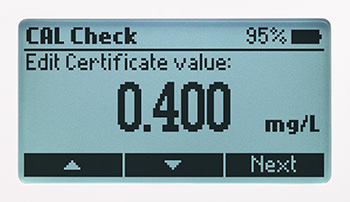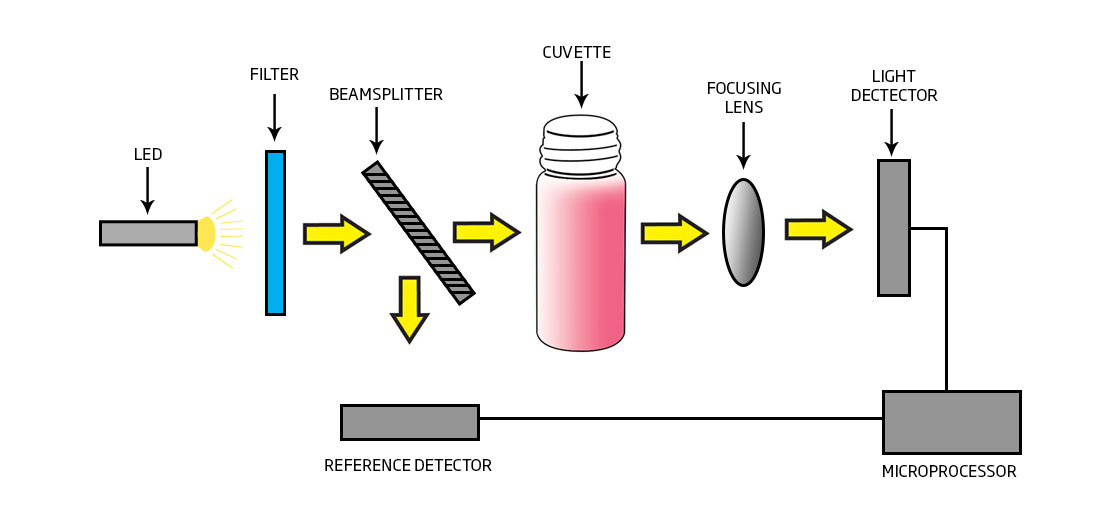Description
Water, with exception of distilled water, contains dissolved salts (magnesium and calcium carbonates). The concentration of these salts determines the water hardness, which can be expressed in calcium carbonate or magnesium carbonate. The sum of these two represents the total hardness level. In addition, water hardness is also related to the phenomenon of pipe rusting in water heating and cooling systems, reverse osmosis, and demineralization plants.
The HI97720 uses an adaptation of the Standard Methods for the Examination of Water and Wastewater, 23rd Edition, calmagite method to measure calcium hardness concentrations of up to 2.70 mg/L (ppm). When the reagent is added to samples containing calcium salts, the sample will turn a red hue; the greater the concentration, the deeper the color. The associated color change is then colorimetrically analyzed according to the Beer-Lambert Law. This principle states that light is absorbed by a complementary color, and the emitted radiation is dependent upon concentration. For calcium hardness determination, a narrow band interference filter at 525 nm allows only green light to be detected by the silicon photodetector and omits all other visible light emitted from the LED lamp. As the change in color of the reacted sample increases, absorbance of the specific wavelength of light also increases, while transmittance decreases.
- LED that generates very little heat.
- 8 nm narrowband interference filter that is accurate to ±1 nm.
- Reference detector that modulates the voltage to LED for consistent light output.
- A concave focusing lens that reduces errors from imperfections in the cuvette.
On-Screen Features

CAL Check
Advanced features including CAL-Check to verify performance and if necessary, recalibrate.

Multiple Chemical Forms
Results can be displayed in multiple chemical forms.

Setup Options
Backlit dot matrix LCD that offers an exceptionally intuitive user interface that is easy to read and understand.

Tutorial Mode
Tutorial mode for step-by-step instructions to guide a first-time user in how to perform a measurement correctly.
Ordering Info
HI97720C is supplied with CAL Check standards, cuvettes (2), caps (2), plastic inserts for cuvette, (2), scissors, cuvette cleaning cloth, 1.5V AA batteries (3), instruction manual, and instrument quality certificate packaged in a rugged, thermoformed, carrying case.
HI97720 is supplied with cuvettes (2), caps (2), plastic inserts for cuvettes (2), 1.5V AA batteries (3), instruction manual, and instrument quality certificate.











